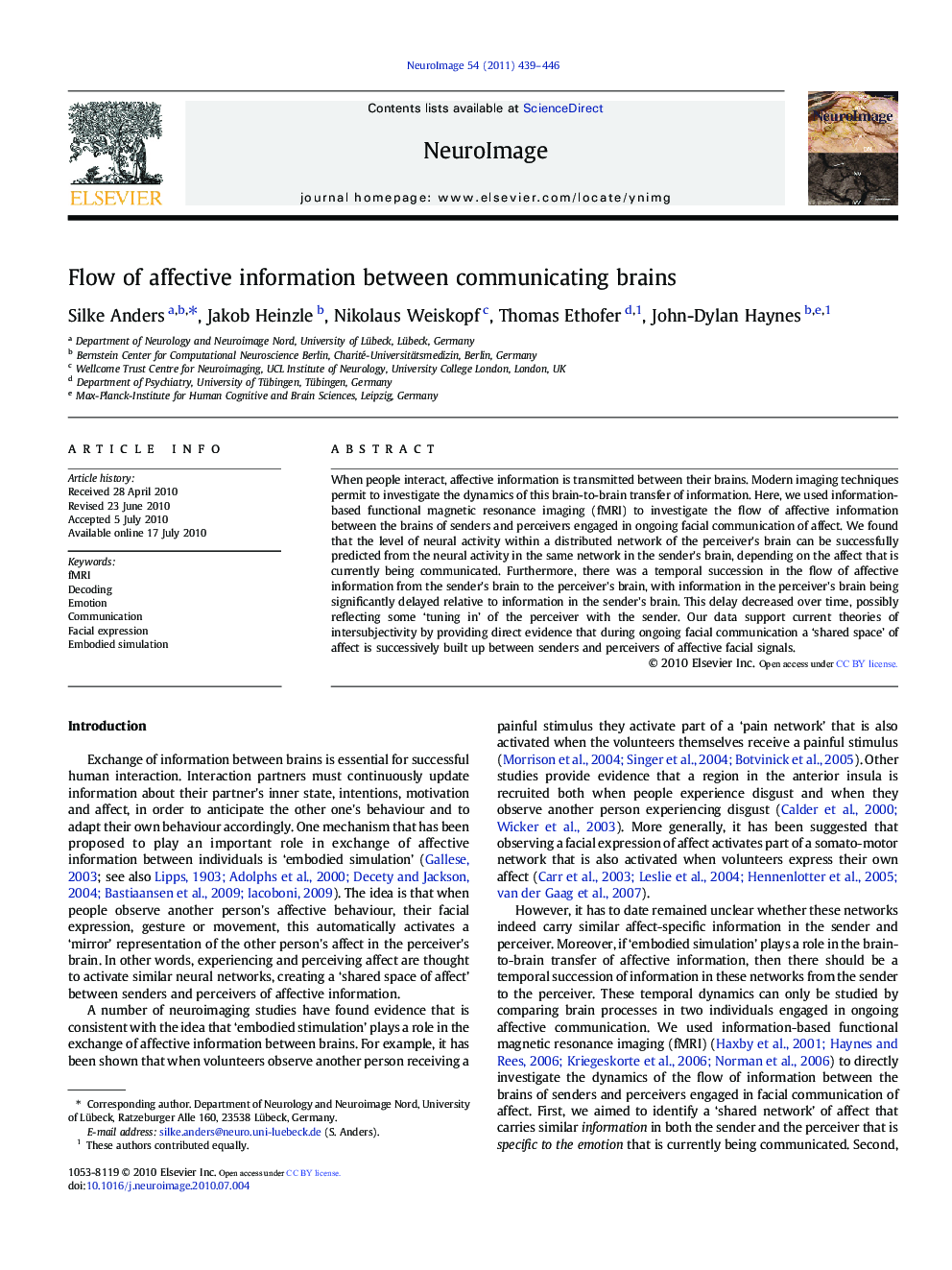| Article ID | Journal | Published Year | Pages | File Type |
|---|---|---|---|---|
| 6033967 | NeuroImage | 2011 | 8 Pages |
When people interact, affective information is transmitted between their brains. Modern imaging techniques permit to investigate the dynamics of this brain-to-brain transfer of information. Here, we used information-based functional magnetic resonance imaging (fMRI) to investigate the flow of affective information between the brains of senders and perceivers engaged in ongoing facial communication of affect. We found that the level of neural activity within a distributed network of the perceiver's brain can be successfully predicted from the neural activity in the same network in the sender's brain, depending on the affect that is currently being communicated. Furthermore, there was a temporal succession in the flow of affective information from the sender's brain to the perceiver's brain, with information in the perceiver's brain being significantly delayed relative to information in the sender's brain. This delay decreased over time, possibly reflecting some 'tuning in' of the perceiver with the sender. Our data support current theories of intersubjectivity by providing direct evidence that during ongoing facial communication a 'shared space' of affect is successively built up between senders and perceivers of affective facial signals.
Research highlightsâºInformation-based neuroimaging is used to map flow of affective information between brains. âºInformation is encoded in a 'shared network' in the brains of senders and perceivers. âºDynamics of information flow suggest some 'tuning-in' of the perceiver with the sender.
